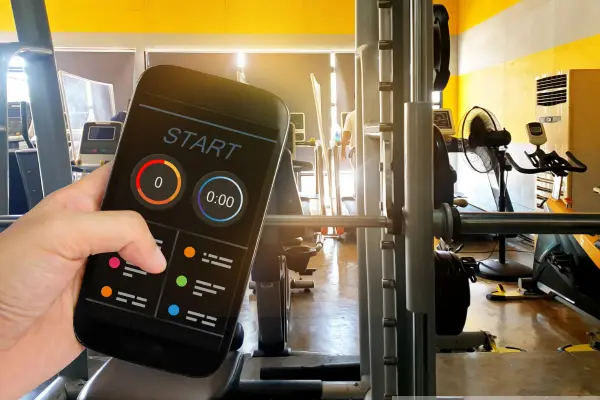Table of Contents
Introduction: The Importance of Stress Relief
In today’s fast-paced world, stress is a common issue that affects our overall well-being. While stress is a natural response to challenges, chronic stress can lead to serious health problems, including heart disease, anxiety, and depression. Fortunately, there are proven ways to manage stress. This article explores eight relaxation techniques backed by science, offering practical solutions to help you unwind and restore balance. By incorporating these techniques into your daily routine, you can improve your mental and physical health.
Deep Breathing: Simple Yet Effective
Deep breathing exercises are one of the most accessible relaxation techniques. When stressed, we often take shallow breaths, which can exacerbate anxiety. By focusing on your breath, you can quickly calm your mind and body. Here’s how to practice deep breathing:
- Find a quiet place: Sit or lie down comfortably.
- Inhale deeply: Breathe in through your nose for a count of four.
- Hold your breath: Hold for a count of four.
- Exhale slowly: Breathe out through your mouth for a count of four.
This technique helps reduce cortisol levels, the stress hormone, promoting a sense of calm. Regular practice can enhance your ability to manage stress effectively.
Progressive Muscle Relaxation: Tension Release
Progressive muscle relaxation (PMR) is a technique that involves tensing and then relaxing different muscle groups. It’s particularly effective for releasing physical tension, which is often a manifestation of stress. Here’s a step-by-step guide:
- Start with your feet: Tense your foot muscles, hold for five seconds, then release.
- Move upwards: Gradually work your way up your body, tensing and relaxing each muscle group.
- Focus on the sensation: Pay attention to the contrast between tension and relaxation.
PMR can improve your awareness of physical stress signs, helping you release tension before it builds up.
Guided Imagery: Visualize Calmness
Guided imagery involves focusing on pleasant images or scenarios to relax your mind. It’s a powerful technique for reducing stress and anxiety. When you visualize a peaceful scene, your brain responds as if you are truly experiencing it. Follow these steps to practice guided imagery:
- Choose a calm setting: Imagine a place where you feel at peace, such as a beach or forest.
- Engage your senses: Picture the sights, sounds, and smells of your peaceful place.
- Immerse yourself: Spend several minutes visualizing this setting, allowing yourself to relax completely.
Regular practice of guided imagery can enhance your ability to cope with stressful situations by providing a mental escape.
Mindfulness Meditation: Stay Present
Mindfulness meditation is about being fully present in the moment without judgment. It’s an excellent way to reduce stress and increase mental clarity. By focusing on your breath or a specific object, you can train your mind to stay in the present, reducing worry about the future or regret about the past. To practice mindfulness meditation:
- Find a quiet spot: Sit comfortably and close your eyes.
- Focus on your breath: Notice the sensation of your breath entering and leaving your body.
- Redirect your mind: If your thoughts wander, gently bring your focus back to your breath.
Mindfulness meditation has been shown to reduce symptoms of anxiety and depression, making it a valuable tool for stress management.
Yoga: Balance Mind and Body
Yoga combines physical postures, breathing exercises, and meditation to promote relaxation and balance. It’s a holistic practice that benefits both the mind and body. Regular yoga practice can increase flexibility, strength, and mental focus, all while reducing stress. Key aspects of yoga for relaxation include:
- Breathing techniques: Focus on deep, controlled breathing.
- Gentle postures: Choose poses that promote relaxation, such as Child’s Pose or Corpse Pose.
- Meditation: End your session with a few minutes of meditation to enhance the calming effects.
Yoga has been shown to lower cortisol levels and improve overall well-being, making it an effective method for managing stress.
Aromatherapy: Harnessing Scents for Stress Relief
Aromatherapy uses essential oils to promote relaxation and well-being. Certain scents have been scientifically proven to reduce stress and anxiety. When you inhale these scents, they send signals to your brain, affecting your mood and stress levels. To use aromatherapy for stress relief:
- Choose calming oils: Lavender, chamomile, and sandalwood are popular choices for relaxation.
- Use a diffuser: Add a few drops of essential oil to a diffuser to fill your space with calming scents.
- Direct inhalation: You can also apply a few drops to your palms, rub them together, and inhale deeply.
Aromatherapy is a simple, effective way to create a relaxing environment, helping to reduce stress and improve sleep quality.
Exercise: Physical Activity for Mental Clarity
Exercise is a powerful stress reliever. Physical activity releases endorphins, the body’s natural mood enhancers, and reduces the levels of stress hormones like cortisol. Regular exercise can improve your mood, boost energy levels, and promote better sleep. Here’s how to incorporate exercise into your stress-relief routine:
- Choose enjoyable activities: Whether it’s walking, running, or dancing, find something you enjoy.
- Stay consistent: Aim for at least 30 minutes of moderate exercise most days of the week.
- Combine with nature: Exercising outdoors can enhance the stress-relieving benefits by exposing you to natural surroundings.
Exercise is not only good for your body but also for your mind, helping you manage stress more effectively.
Journaling: Expressive Writing for Emotional Relief
Journaling is a simple yet powerful tool for managing stress. Writing about your thoughts and feelings can help you process emotions, gain clarity, and reduce stress. It’s a safe space to explore your inner world without judgment. To get started with journaling:
- Set aside time: Dedicate a few minutes each day to write about your experiences and feelings.
- Be honest: Write freely without worrying about grammar or spelling.
- Reflect on your writing: Review what you’ve written to gain insights into your stress triggers and patterns.
Journaling can help you better understand your emotions and provide a sense of relief, making it an effective strategy for stress management.
Conclusion: Integrating Relaxation Techniques into Your Daily Life
Managing stress is crucial for maintaining overall health and well-being. The eight techniques discussed—deep breathing, progressive muscle relaxation, guided imagery, mindfulness meditation, yoga, aromatherapy, exercise, and journaling—are all backed by science and offer practical ways to reduce stress. By incorporating these techniques into your daily routine, you can create a balanced life that supports mental clarity, emotional stability, and physical health. Remember, the key to effective stress management is consistency, so try to practice these techniques regularly to experience their full benefits.










